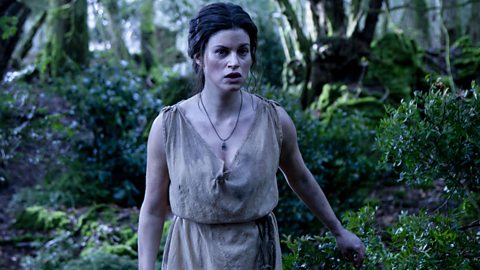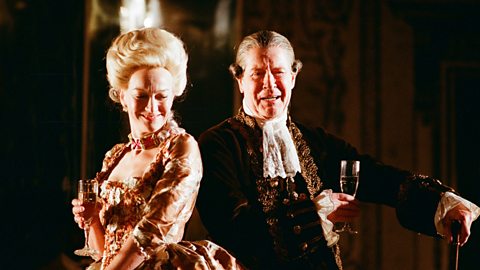Costume, masks and make-up
Costume

Costume is what the actors wear when performing. Costume can denote character, historical era and the style of the production, eg naturalisticA form of theatre designed to create the illusion of reality for an audience. Originated in the late 19th century. or abstractThe opposite of a realistic representation is an abstract representation where a character or concept may be symbolised in a poetic rather than literal way..
ItÔÇÖs important to consider the type of costume that best suits your work and also how easy it is to change from one costume to the next. You may decide to keep things simple and avoid unnecessary costume changes which can slow the pace of your production. Sometimes the simple addition of a hat can help to communicate character, especially if actors are playing more than one role.
If a play is naturalistic then costume needs to be authentic and appropriate for the character, their status and the playÔÇÖs setting. This calls for research into the garments, styles, colours and fabrics of the time when the play is set. For example, in Tudor EnglandPeriod of history spanning the Tudor dynasty of monarchs ruling England between 1485-1603. dyes were expensive, so only the wealthiest citizens would have worn garments of bright colours. Therefore, costume often indicates the social status of a character.
Symbolism in costume
Costume is often used to help communicate a characterÔÇÖs personality. A flamboyant character might wear brightly coloured clothing while a more sombre or serious character would dress in dark coloured clothes. Colour has its own language and can be used symbolically. White may represent innocence and purity, and red may represent danger.
In ShakespeareÔÇÖs era an actor playing a king would dress in regal purple, symbolic of holiness, as kings were considered second only to God.

Costume can really help an actor to feel the part and has a big impact upon performance. What we wear affects the way we move and in some cases speak, so wearing the right thing can help us to find detail in characterisation. Look at Describing Costume to learn how costume can affect characterisation.
